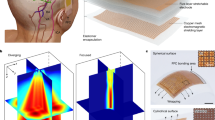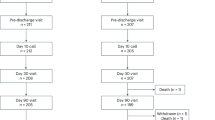Abstract
Ischemic stroke is a leading cause of death and disability in the Western world. At present, intravenous administration of tissue plasminogen activator within 3 h of symptom onset is the only proven effective treatment to re-establish cerebral blood flow in the case of acute vessel occlusion. Unfortunately, few patients presenting with acute ischemic stroke qualify for intravenous tissue plasminogen activator therapy. The focus of current research is, therefore, to find new treatment options by which to obtain early reperfusion, and to extend the therapeutic window for intervention beyond 3 h. The purpose of this Review is to provide an integrated view of the current state of reperfusion therapy in patients with acute stroke, including pharmacologic agents and the methods of delivery. The focus will be on intravenous and intra-arterial use of plasminogen activators in acute supratentorial infarction. Other therapies, such as antiplatelet agents (i.e. glycoprotein IIb/IIIa inhibitors), and anticoagulant drugs will be discussed briefly.
Key Points
-
Re-establishment of blood flow as soon as possible is crucial in acute ischemic stroke
-
Intravenous administration of tissue plasminogen activator within 3 h of symptom onset is still the only proven effective treatment
-
Several pharmacological and mechanical approaches are currently under investigation to achieve and maintain early reperfusion, and to extend the therapeutic window for intervention beyond 3 h
-
This review provides an integrated view of the current state of reperfusion therapy in patients with acute stroke, including pharmacologic agents such as plasminogen activators, antiplatelet agents, and anticoagulant drugs
This is a preview of subscription content, access via your institution
Access options
Subscribe to this journal
Receive 12 print issues and online access
$209.00 per year
only $17.42 per issue
Buy this article
- Purchase on Springer Link
- Instant access to full article PDF
Prices may be subject to local taxes which are calculated during checkout
Similar content being viewed by others
References
Astrup J et al. (1981) Thresholds in cerebral ischemia—the ischemic penumbra. Stroke 12: 723–725
Heiss WD et al. (1994) Dynamic penumbra demonstrated by sequential multi-tracer PET after middle cerebral artery occlusion in cats. J Cereb Blood Flow Metab 14: 892–902
Heiss WD (2000) Ischemic penumbra: evidence from functional imaging in man. J Cereb Blood Flow Metab 20: 1276–1293
Hossmann KA (1994) Viability thresholds and the penumbra of focal ischemia. Ann Neurol 36: 557–565
Hacke W et al. (1995) Critical care of acute ischemic stroke. Int Care Med 21: 856–862
Jones TH et al. (1981) Thresholds of focal cerebral ischemia in awake monkeys. J Neurosurg 54: 773–782
Schellinger PD et al. (2001) Thrombolytic therapy for ischemic stroke—a review: part I intravenous thrombolysis. Crit Care Med 29: 1812–1818
Schellinger PD et al. (2001) Thrombolytic therapy for ischemic stroke—a review: part II intraarterial thrombolysis, vertebrobasilar stroke, phase IV trials, and stroke imaging. Crit Care Med 29: 1819–1825
Morris AD et al. (1995) A pilot study of streptokinase for acute cerebral infarction. QJM 88: 727–731
Multicentre Acute Stroke Trial–Italy (MAST-I) Group (1995) Randomised controlled trial of streptokinase, aspirin, and combination of both in treatment of acute ischemic stroke. Lancet 346: 1509–1514
The Multicenter Acute Stroke Trial–Europe Study Group (1996) Thrombolytic therapy with streptokinase with acute ischemic stroke. N Engl J Med 335: 145–150
Donnan GA et al. (1996) Streptokinase for acute ischemic stroke with relationship to the time of administration. Australian Streptokinase (ASK) Trial Study Group. JAMA 276: 961–966
Cornu C et al. (2000) Streptokinase in acute ischemic stroke: an individual patient data meta-analysis. The Thrombolysis in Acute Stroke Pooling Project. Stroke 31: 1555–1560
Del Zoppo GJ (1997) Thrombolytic therapy in the treatment of stroke. Drugs 54 (Suppl 3): S90–S99
Mori E et al. (1992) Intravenous recombinant tissue plasminogen activator in acute carotid artery territory stroke. Neurology 42: 976–982
Yamaguchi T et al. (1993) Intravenous tissue plasminogen activator ameliorates the outcome of hyperacute embolic stroke. Cerebrovasc Dis 3: 269–272
Haley EC Jr et al. (1993) Pilot randomized trial of tissue plasminogen activator in acute ischemic stroke. The TPA Bridging Study Group. Stroke 24: 1000–1004
The National Institute of Neurological Disorders and Stroke rt-PA Stroke Study Group (1995) Tissue plasminogen activator for acute ischemic stroke. N Engl J Med 333: 1581–1587
Hacke W et al. (1995) Intravenous thrombolysis with recombinant tissue plasminogen activator for acute hemispheric stroke. The European Cooperative Acute Stroke Study. JAMA 274: 1017–1025
Hacke W et al. (1998) Randomised double-blind placebo-controlled trial of thrombolytic therapy with intravenous alteplase in acute ischemic stroke (ECASS II). Lancet 352: 1245–1251
Clark WM et al. (1999) Recombinant tissue-type plasminogen activator (Alteplase) for ischemic stroke 3 to 5 hours after symptom onset—the ATLANTIS Study: a randomized controlled trial. Alteplase Thrombolysis for Acute Noninterventional Therapy in Ischemic Stroke. JAMA 282: 2019–2026
Clark WM et al. (2000) The rtPA (Alteplase) 0- to 6-Hour Acute Stroke Trial, Part A (A0276g): results of a double-blind, placebo-controlled, multicenter study. Stroke 31: 811–816
Hacke W et al. (2004) Association of outcome with early stroke treatment: pooled analysis of ATLANTIS, ECASS, and NINDS rt-PA stroke trials. Lancet 363: 768–774
Haley EC Jr et al. TNK in Stroke Investigators (2005) A pilot dose-escalation safety study of tenecteplase in acute ischemic stroke. Stroke 36: 607–612
Hacke W et al. DIAS Study Group (2005) The Desmopletase in Acute Ischemic Stroke Trial (DIAS): a phase II MRI-based 9 hour window acute stroke thrombolysis trial with intravenous desmopletase. Stroke 36: 66–73
Furlan AJ et al. DEDAS Investigators (2006) Dose Escalation of Desmoteplase for Acute Ischemic Stroke (DEDAS): evidence of safety and efficacy 3 to 9 hours after stroke onset. Stroke 37: 1227–1231
Sugg RM et al. (2006) Intra-arterial reteplase compared to urokinase for thrombolytic recanalization in acute ischemic stroke. Am J Neuroradiol 27: 769–773
Lijnen HR et al. (1989) The mechanism of plasminogen activation and fibrin dissolution by single chain urokinase-type plasminogen activator in plasma milieu in vitro. Blood 73: 1864–1872
Atarashi J et al. (1985) Clinical utility of urokinase in the treatment of acute stage cerebral thrombosis: multi-center double blind study in comparison with placebo [Japanese]. Clin Eval 13: 659–709
Ohtomo E et al. (1985) Clinical efficacy of urokinase in the treatment of cerebral thrombosis: multi-center double blind study in comparison with placebo [Japanese]. Clin Eval 15: 711–731
Abe T et al. (1981) Clinical evaluation for efficacy of tissue cultured urokinase (tcuk) on cerebral thrombosis by means of multi-centre double blind study [Japanese]. Blood-Vessel 12: 321–341
Del Zoppo GJ et al. (1998) PROACT: a phase II randomized trial of recombinant pro-urokinase by direct arterial delivery in acute middle cerebral artery stroke. PROACT Investigators. Prolyse in Acute Cerebral Thromboembolism. Stroke 29: 4–11
Del Zoppo GJ et al. (1988) Local intra-arterial fibrinolytic therapy in acute carotid territory stroke: a pilot study. Stroke 19: 307–313
Furlan A et al. (1999) Intra-arterial prourokinase for acute ischemic stroke. The PROACT II study: a randomized controlled trial. Prolyse in Acute Cerebral Thromboembolism. JAMA 282: 2003–2011
Eckert B et al. (2003) Local intra-arterial fibrinolysis in acute hemispheric stroke: effect of occlusion type and fibrinolytic agent on recanalization. Cerebrovasc Dis 15: 258–263
Zhang ZG et al. (2001) Dynamic platelet accumulation at the site of the occluded middle cerebral artery and in downstream microvessels is associated with loss of microvascular integrity after embolic middle cerebral artery occlusion. Brain Res 912: 181–194
Coller BS (1992) Antiplatelet agents in the prevention and therapy of thrombosis. Ann Rev Med 43: 171–180
Kleiman NS et al. (1998) Glycoprotein IIb/IIIa inhibitors in acute coronary syndromes: pathophysiologic foundation and clinical findings. Am Heart J 136 (Suppl): S32–S42
Abciximab Emergent Stroke Treatment Trial (AbESTT) Investigators (2005) Emergency administration of abciximab for treatment of patients with acute ischemic stroke. Stroke 36: 880–890
The SaTIS Investigators (2006) The Safety of Tirofiban in Acute Ischemic Stroke (SaTIS) Presented at the 15th European Stroke Conference: 2006 May 16–19, Brussels
CAST (Chinese Acute Stroke Trial) Collaborative Group (1997) CAST: randomised placebo-controlled trial of early aspirin use in 20,000 patients with acute ischaemic stroke. Lancet 349: 1641–1649
International Stroke Trial Collaborative Group (1997) The International Stroke Trial (IST): a randomised trial of aspirin, subcutaneous heparin, both, or neither among 19435 patients with acute ischaemic stroke. Lancet 349: 1569–1581
Antithrombotic Trialists' Collaboration (2002) Collaborative meta-analysis of randomised trials of antiplatelet therapy for prevention of death, myocardial infarction, and stroke in high risk patients. BMJ 324: 71–86
Camerlingo M et al. (2005) Intravenous heparin starter within the first 3 hours after onset of symptoms as a treatment for acute nonlacunar hemispheric cerebral infarctions. Stroke 36: 2415–2420
Chamorro A et al. (2005) The rapid anticoagulation prevents ischemic damage study in acute stroke—final results from the writing committee. Cerebrovasc Dis 19: 402–404
Berge E and Sandercock P (1992) Anticoagulants versus antiplatelet agents for acute ischemic stroke. The Cochrane Database of Systematic Reviews, Issue 4, Art. No CD003242
Gobin YP et al. (2004) MERCI 1: a phase I study of mechanical embolus removal in cerebral ischemia. Stroke 35: 2848–2854
Lewandowski CA et al. (1999) Combined intravenous and intra-arterial r-TPA versus intra-arterial therapy of acute ischemic stroke: Emergency Management of Stroke (EMS) bridging trial. Stroke 30: 2598–2605
IMS Study Investigators (2004) Combined intravenous and intra-arterial recanalization for acute ischemic stroke: the Interventional Management of Stroke Study. Stroke 35: 904–911
Zhang L et al. (2003) Adjuvant treatment with a glycoprotein IIb/IIIa receptor inhibitor increases the therapeutic window for low-dose tissue plasminogen activator administration in a rat model of embolic stroke. Circulation 107: 2837–2843
Lee DH et al. (2002) Local intraarterial urokinase thrombolysis of acute ischemic stroke with or without intravenous abciximab: a pilot study. J Vasc Interv Radiol 13: 769–774
Deshmukh VR et al. (2005) Intra-arterial thrombolysis for acute ischemic stroke: preliminary experience with platelet glycoprotein IIb/IIIa inhibitors as adjunctive therapy. Neurosurgery 56: 46–54
Alexandrov A et al. CLOTBUST Investigators (2004) Ultrasound-enhanced systemic thrombolysis for acute ischemic stroke. N Engl J Med 351: 2170–2178
Molina C et al. (2006) Microbubble administration accelerates clot lysis during continuous 2-MHz ultrasound monitoring in stroke patients treated with intravenous tissue plasminogen activator. Stroke 37: 425–429
Daffertshofer M et al. (2005) Transcranial low frequency ultrasound mediated thrombolysis in brain ischemia: increased risk of hemorrhage with combined ultrasound and tissue plasminogen activator: results of a phase II trial. Stroke 36: 1441–1446
Juttler E et al. (2006) Diagnostic imaging for acute ischemic stroke management. Expert Rev Med Dev 3: 113–126
Albers G et al. (online 2004) DEFUSE Study [http://strokecenter.stanford.edu/trials/defuse.html] (accessed 25 October 2006)
Author information
Authors and Affiliations
Corresponding author
Ethics declarations
Competing interests
E Juttler and M Kohrmann declared they have no competing interests.
PD Schellinger declined to provide information about competing interests.
Rights and permissions
About this article
Cite this article
Juttler, E., Kohrmann, M. & Schellinger, P. Therapy for early reperfusion after stroke. Nat Rev Cardiol 3, 656–663 (2006). https://doi.org/10.1038/ncpcardio0721
Received:
Accepted:
Issue Date:
DOI: https://doi.org/10.1038/ncpcardio0721
This article is cited by
-
lncfos/miR-212-5p/CASP7 Axis-Regulated miR-212-5p Protects the Brain Against Ischemic Damage
Molecular Neurobiology (2023)
-
Pericyte contraction induced by oxidative-nitrative stress impairs capillary reflow despite successful opening of an occluded cerebral artery
Nature Medicine (2009)
-
NF-κB induces PGE2-synthesizing enzymes in neurons
Naunyn-Schmiedeberg's Archives of Pharmacology (2009)



